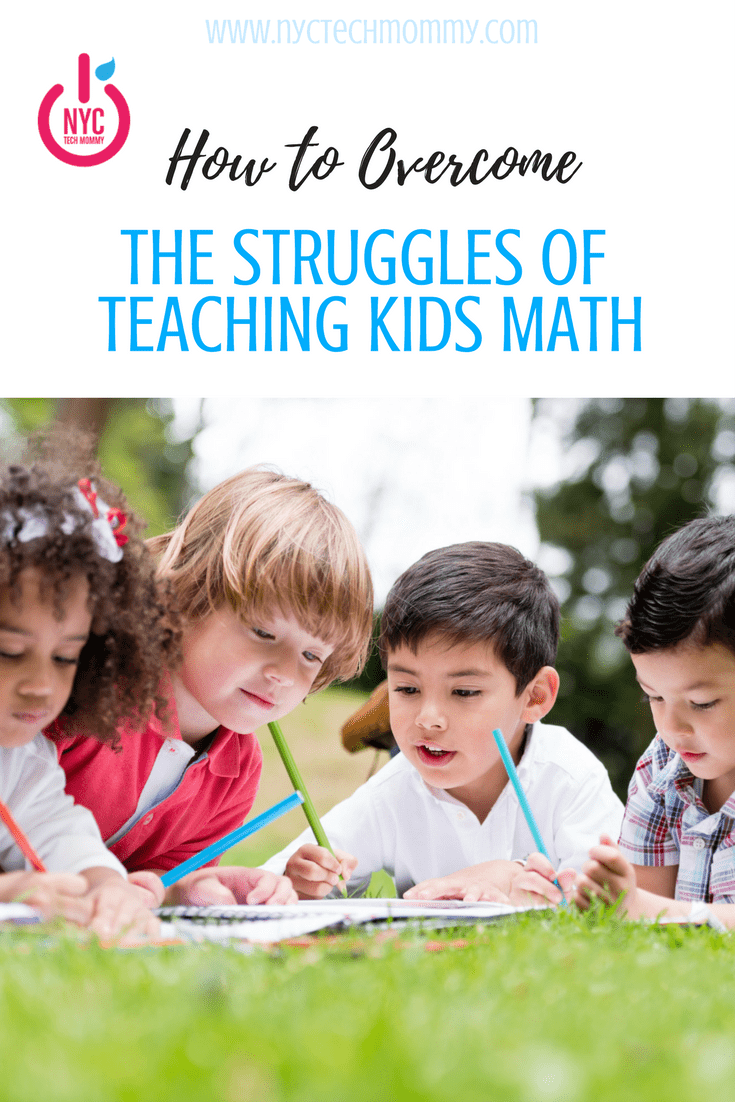
How to Overcome the Struggles of Teaching Kids Math
Let’s talk about ways to overcome the struggles of teaching kids math. One of the biggest challenges of parenthood is having to oversee our kids’s education. Kids usually need our help with their schoolwork, especially with technical subjects like math. Plus, it’s relatively common for Mathematics to not be among a kid’s favorite subjects. This is despite the fact that it’s vital to encourage kids to pursue STEM related careers.
This is a guest post by JB of LearnwithJB

To make things easier for both kids and educators, new ways of teaching math are regularly surfacing. Parents must also consider these new ways of teaching math. This is important because every child is different, and not all kids are able to understand math concepts in the same ways.
The role of math in a child’s educational development is not to be neglected. Greg Duncan, PhD, an Educational Policy expert at University of California-Irvine, found that early math skills can be a reliable predictor of later success in school. This further validates how critical it is to continuously formulate new strategies to learn, without removing the solid foundations from traditional practice.
How to Overcome the Struggles of Teaching Kids Math
Numerous educators are now incorporating certain elements to retain their students’ interest toward math. Standard chalkboard or pen-and-paper methods are complemented with fun and interactive sessions that tackle the subject. Here are some good examples of how to overcome the struggles of teaching kids math.
Technologicalization
Kids are naturally drawn to new technology due to their curiosity. From smartphones and tablets to computers and television, a lot of their focus are on screens. Parents and teachers can use this to their advantage when teaching math. For example, the Smartick Method uses proprietary artificial intelligence to adapt to each child’s learning style. 15 minutes of maximum concentration are given to children daily, for them to work on mental calculation and algebra while developing problem solving and reasoning skills. It’s then followed by exercises and games as a way to challenge them after completing the serious math sessions. The online program has proven to be so helpful in education that it is actually supported by the European Union.
Similarly, a previous post here on NYC Tech Mommy highlighted two kid-friendly programs, namely Tynker and Minecraft. It was shown how these tools encourage kids to learn technical subjects through adventure and building virtual objects.
Combine math and art and a lot of kids who dislike technical topics like math are usually more inclined towards abstract concepts like art. It may seem that both subjects are vastly different, but Tootsa showed that math is still instrumental in art, and vice-versa. To encourage strategic thinking from artistic students, teachers can incorporate math into art projects. Alex Bellos’ book Snowflake, Seashell, Star – A Coloring Adventure In Numberland, for instance, gives kids the chance to color certain patterns that follow mathematical rules.
Set No Limitations
Learning math is not only a mental challenge, but an emotional one as well. Some kids – and even adults – have accepted that the subject is simply not for them. As a response, a Canadian math tutor and author, John Mighton, created a curriculum called JUMP or Junior Undiscovered Math Prodigies. Its main focus is to lessen the stigma around math and to encourage even the lowest-performing students to still pursue the subject. At Smartick, they have found that when children are in the exact level where they feel confident to tackle new challenges, they begin to have a growth mindset that speeds the learning of math.
The JUMP program doesn’t create limits on the types and levels of math a child can study at a particular age. Quartz Media tackled this new concept and reported that 15,000 kids in both in the United States and Canada and 12,000 kids in Spain are now using this curriculum.
[Tweet “How to Overcome the Struggles of Teaching Kids Math via @NYCTechMommy”]
If you find your kid struggling with math, it may be best to look for other alternatives to approach the subject. You can try the methods mentioned above or search for new ways that might suit your kid better. After all, gaining knowledge is an endless process. By teaching your kids through new and varying methods, you also learn along the way.
Guest post written exclusively for NYCTechMommy by LearnwithJB

JB of LearnwithJB is a mother of two and a work-at-home housewife. She is a freelance web contributor and is in West Virginia with her family at the moment.
You May Also Like

Mommy Help: Ways to Exercise When You Are Short on Time
May 1, 2019
5 Tricks to Keeping Your Kids Entertained on Your Next Road Trip
November 21, 2018



